
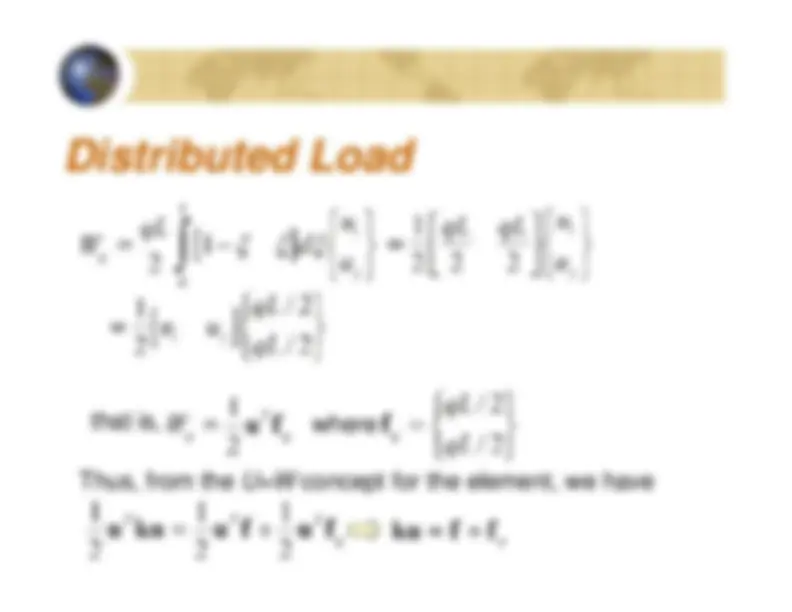
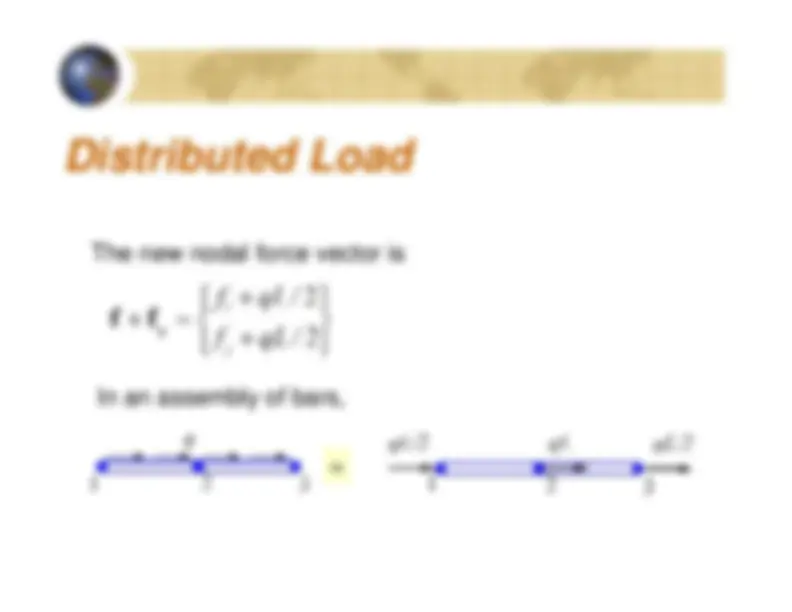
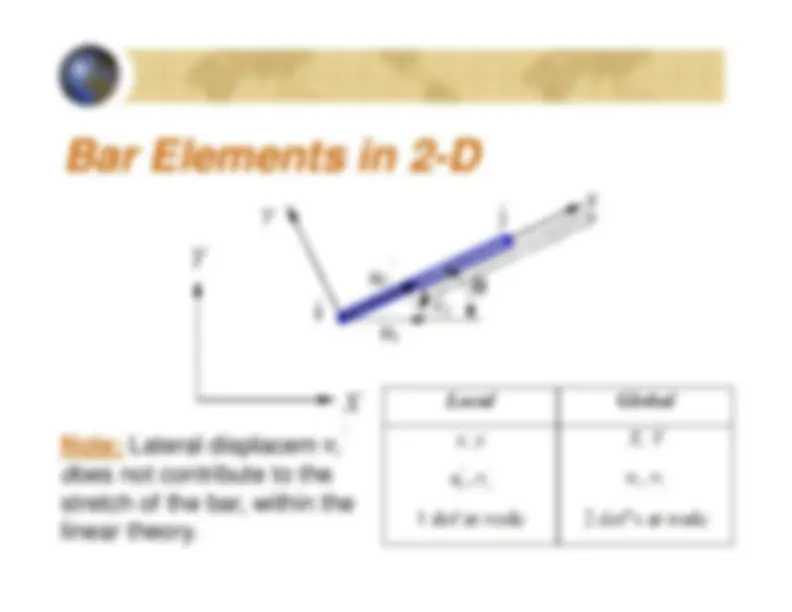
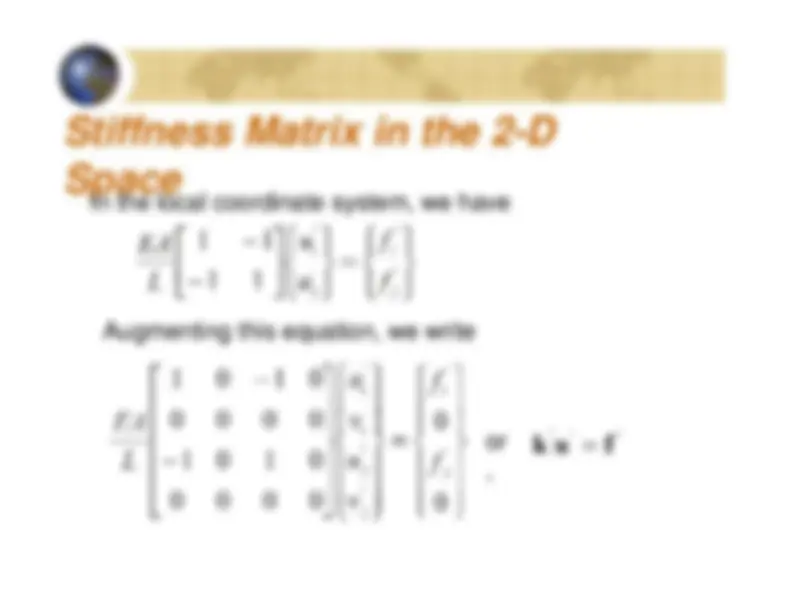
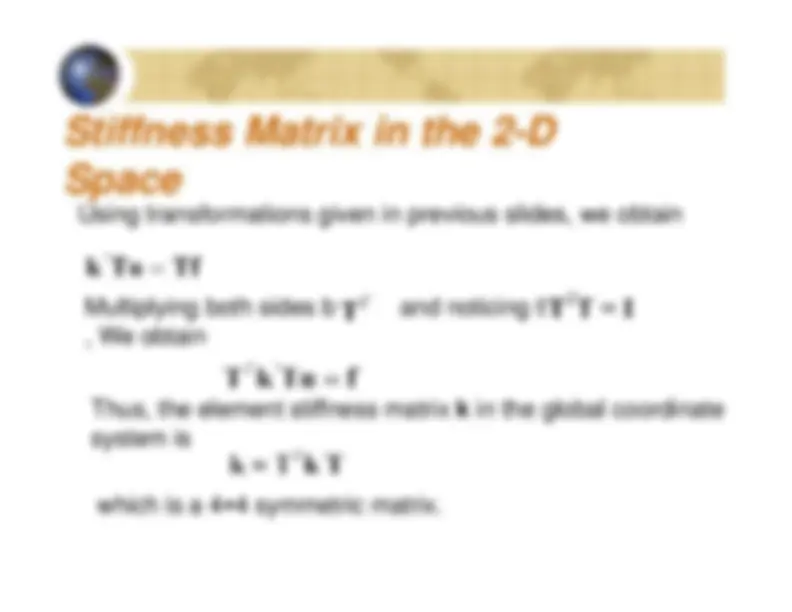
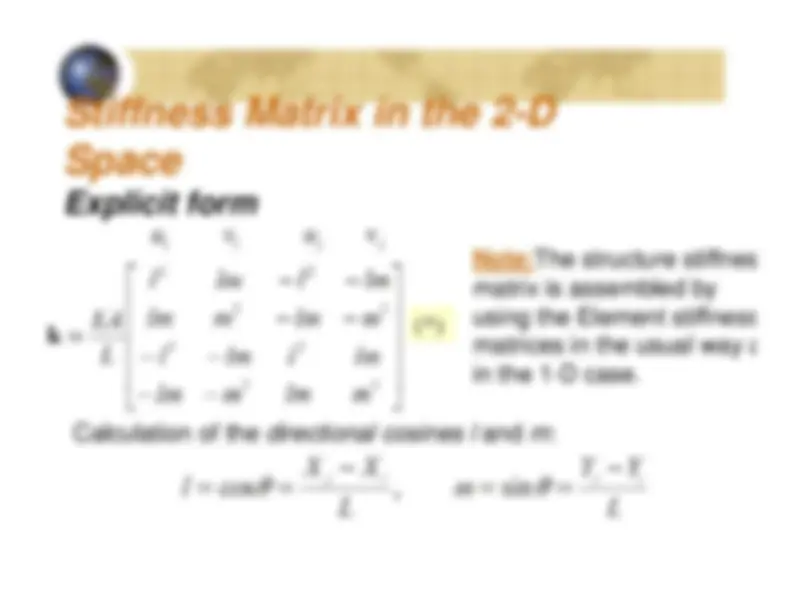
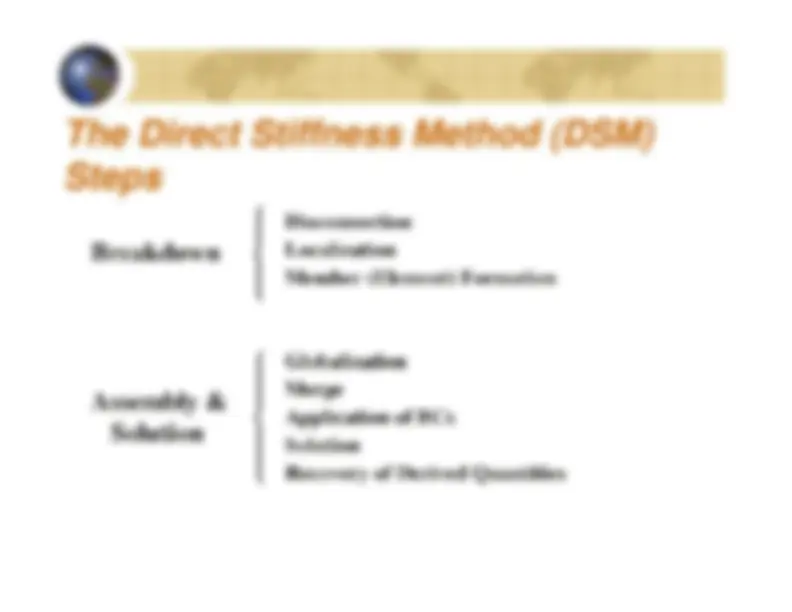
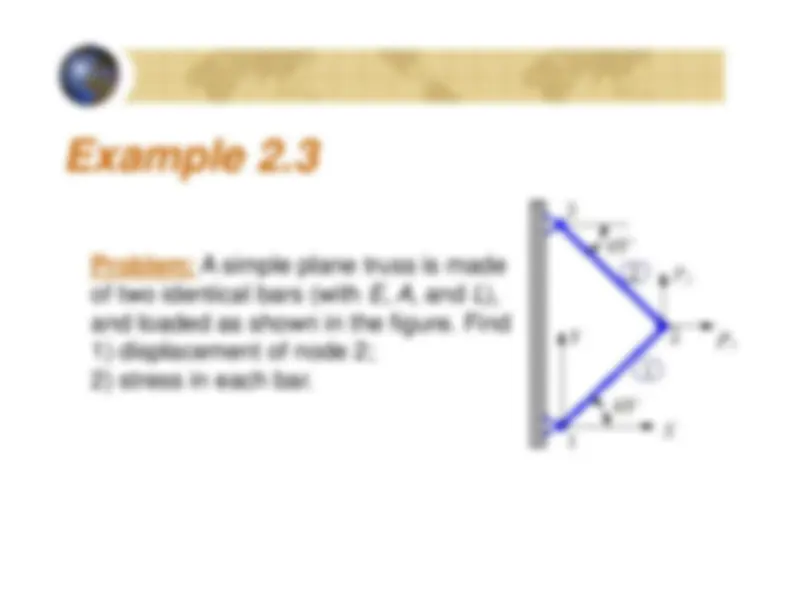
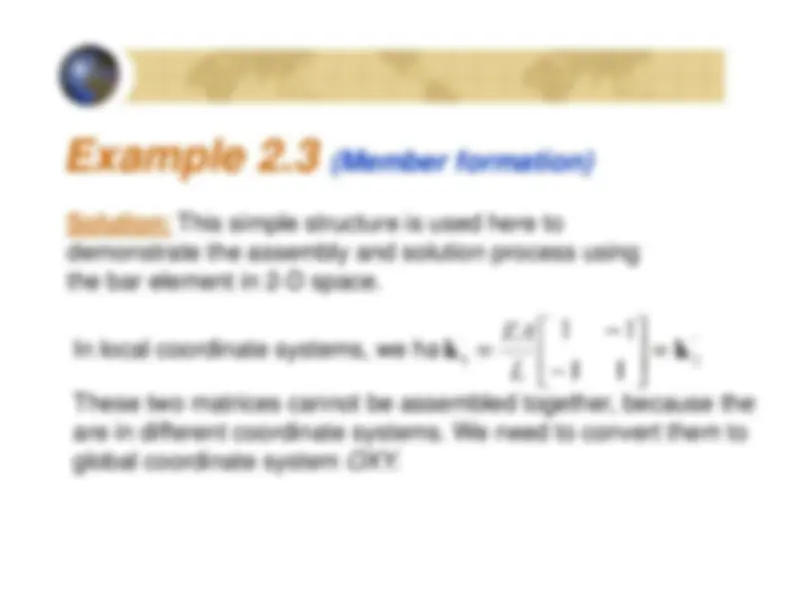

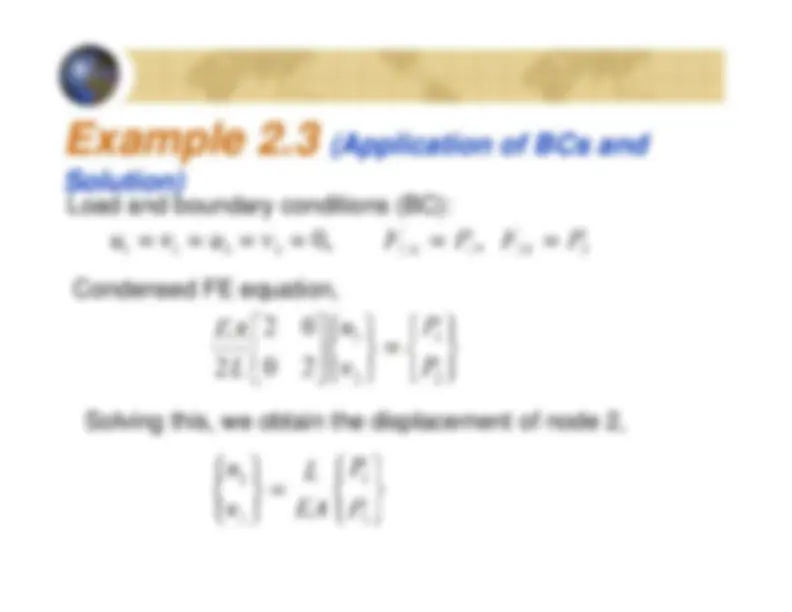
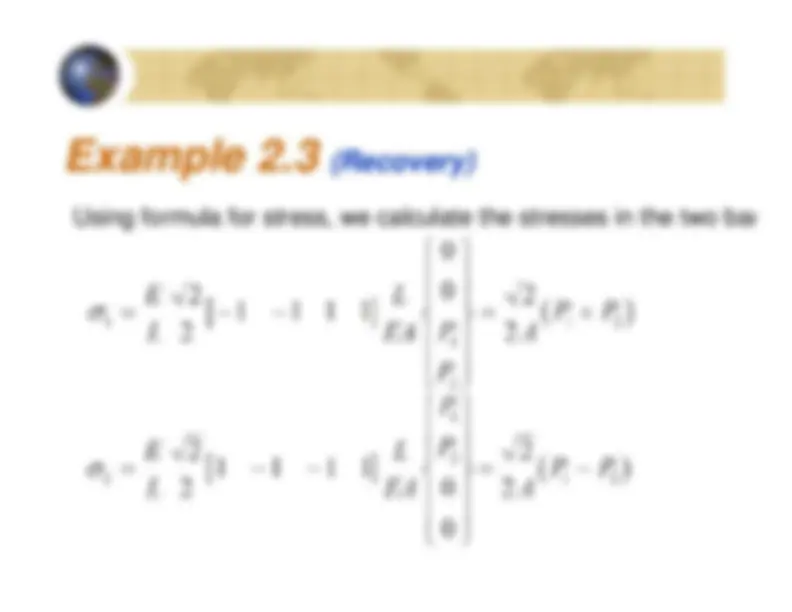
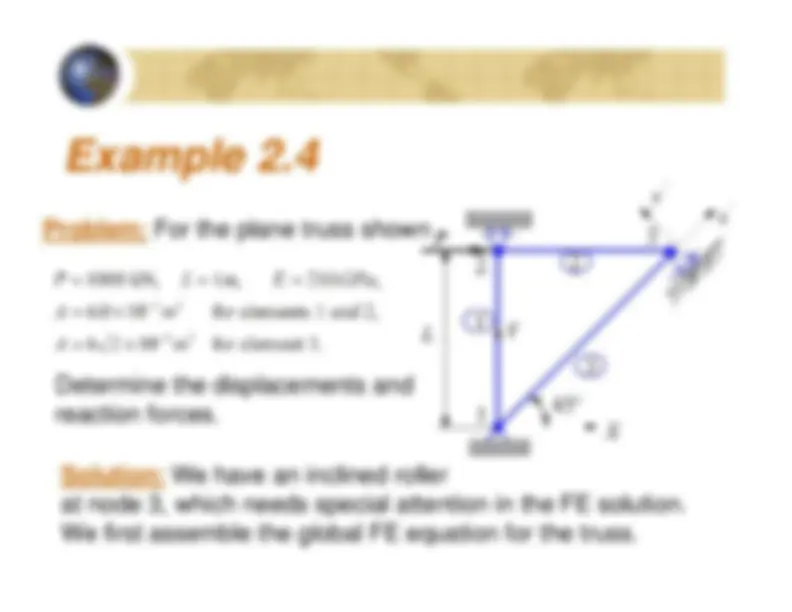
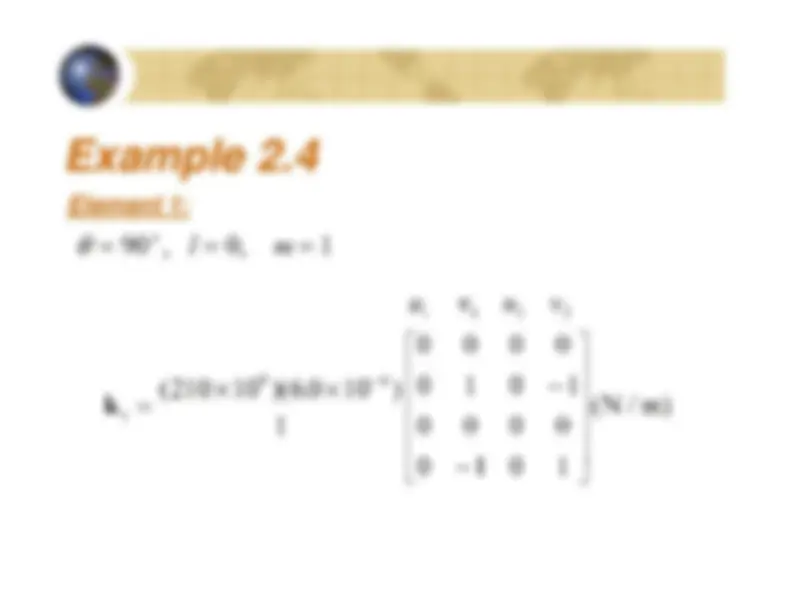
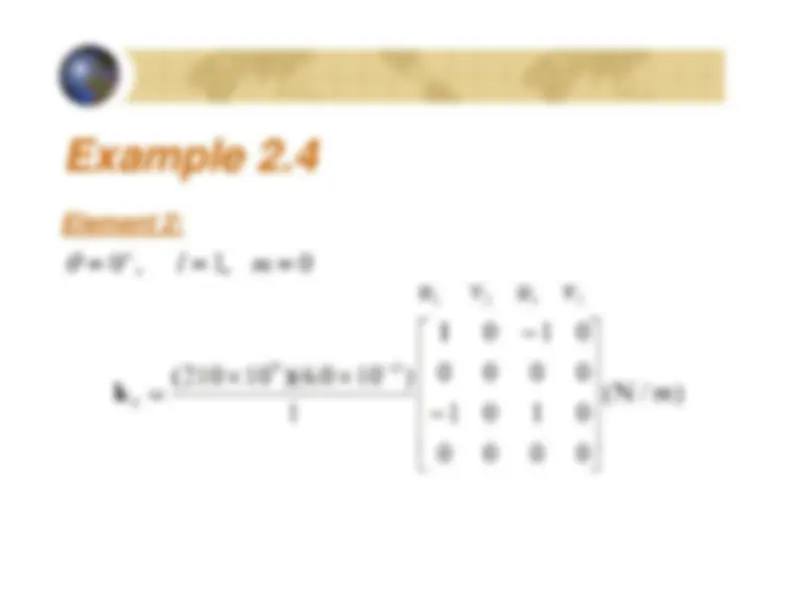
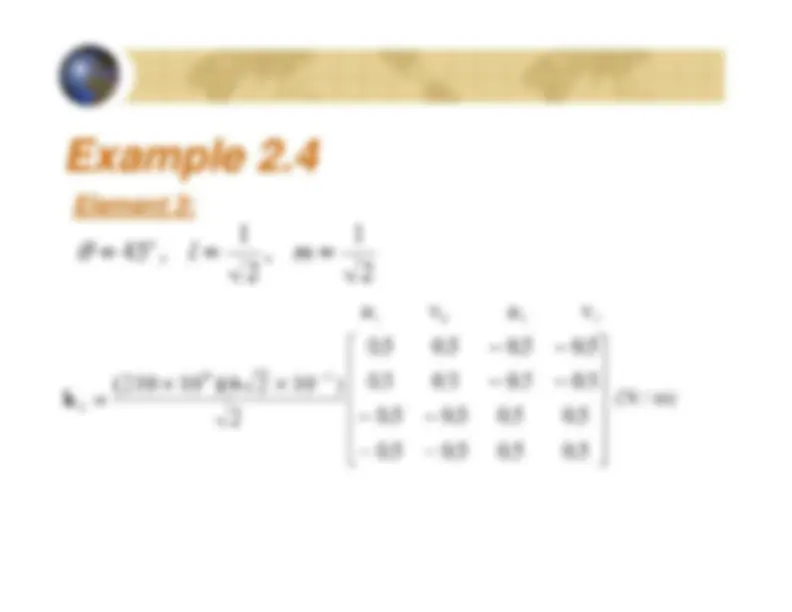
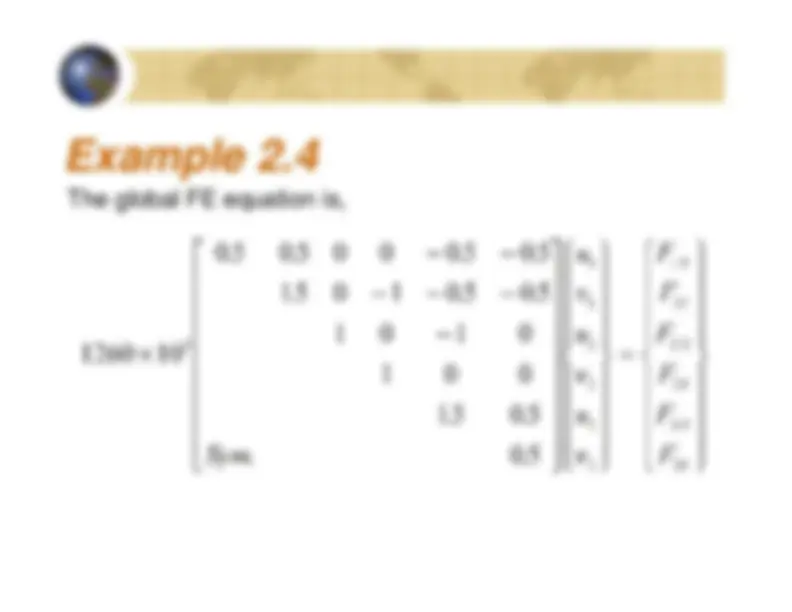
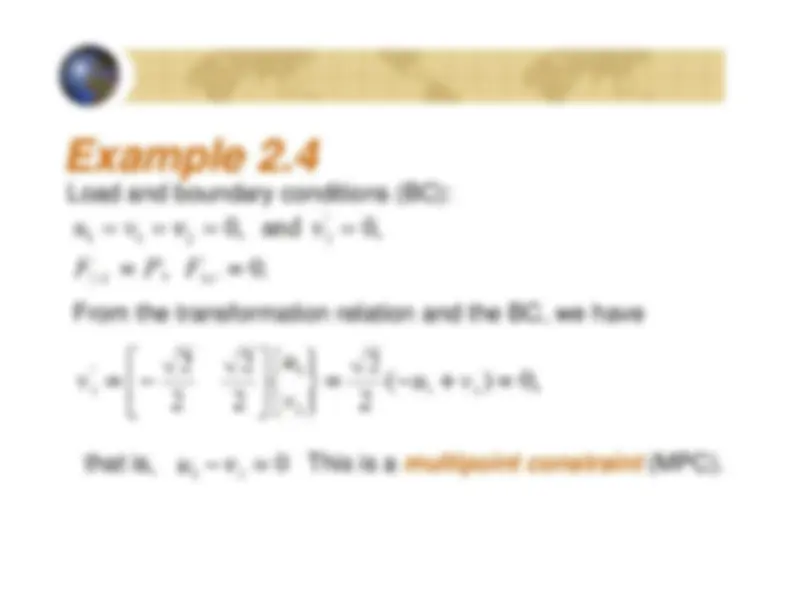
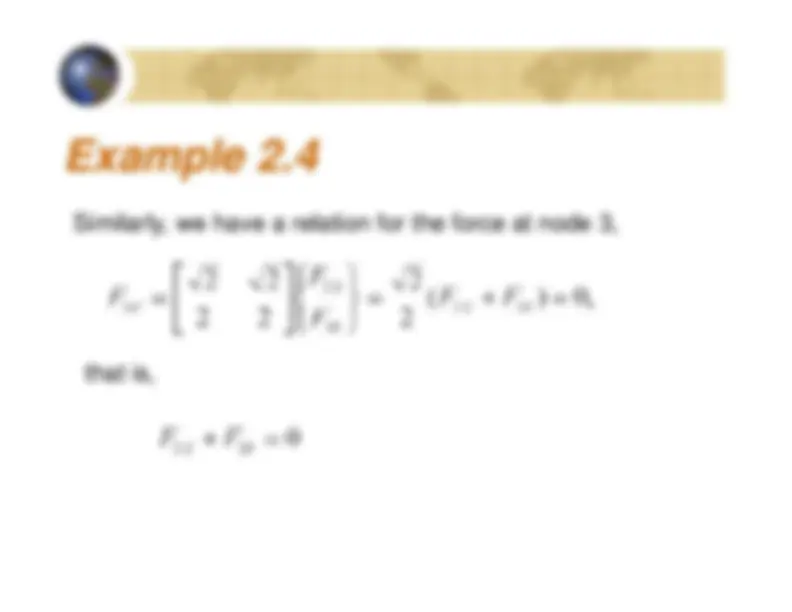
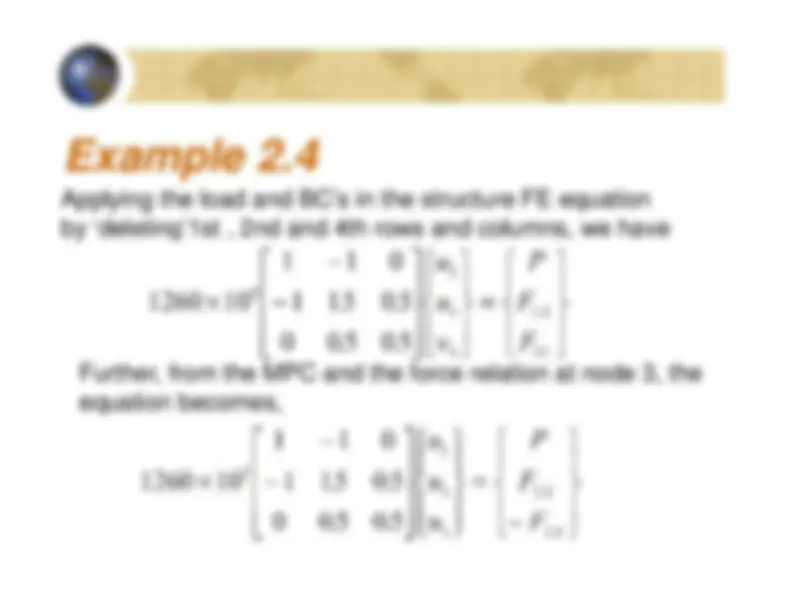
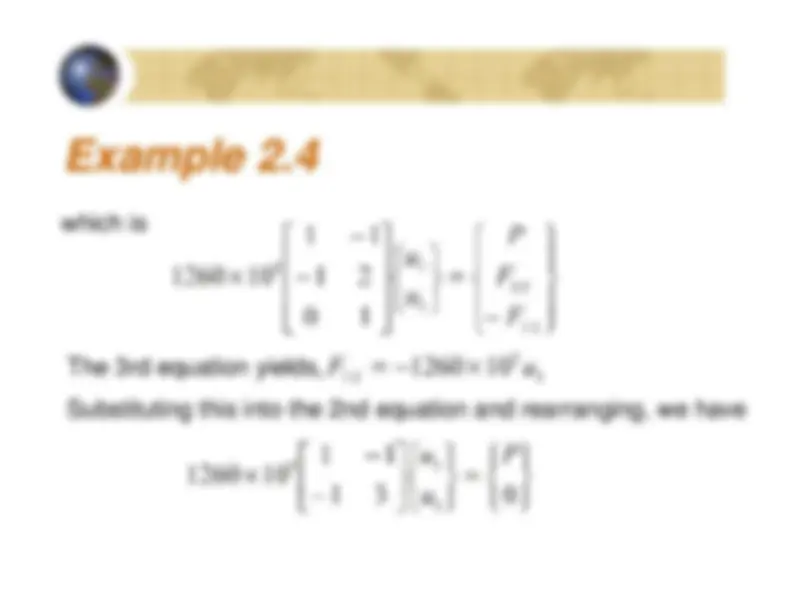
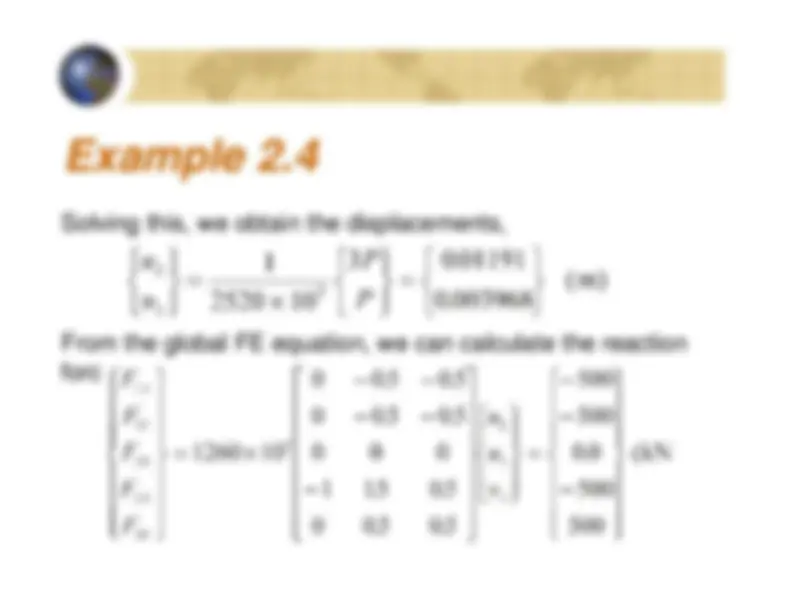
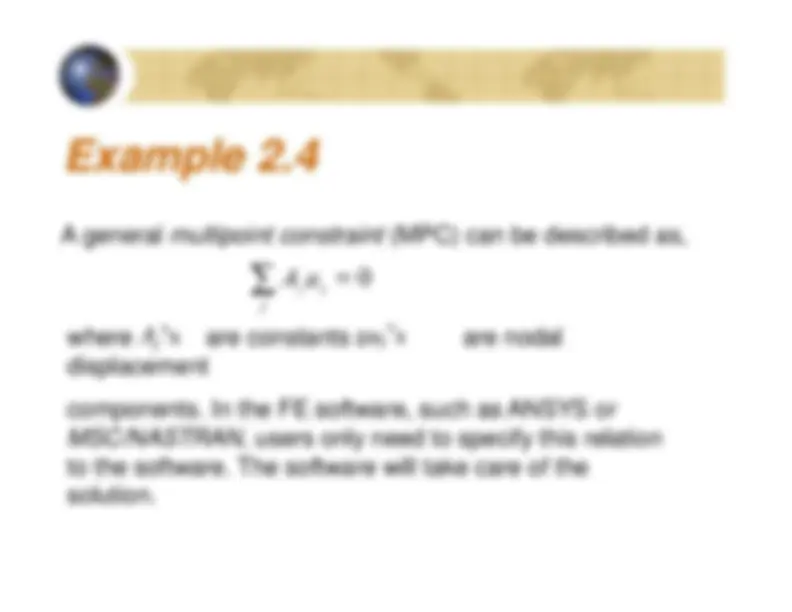
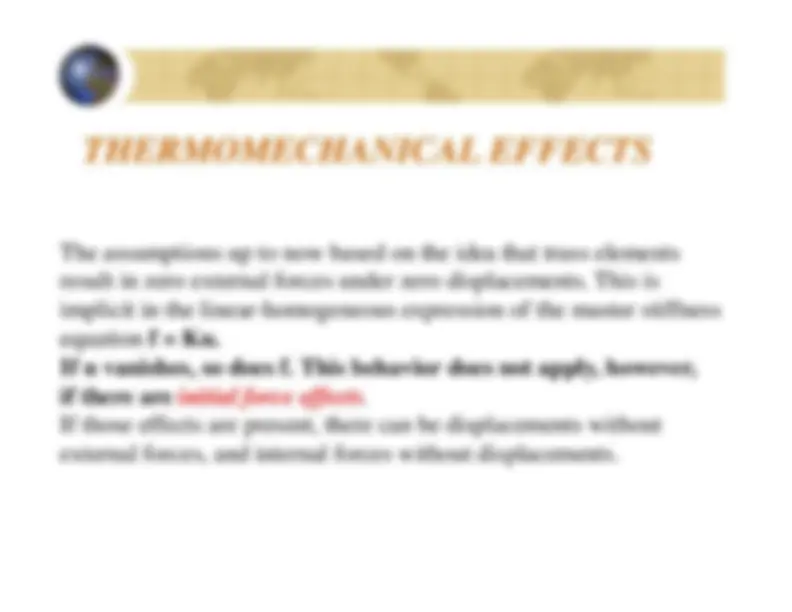
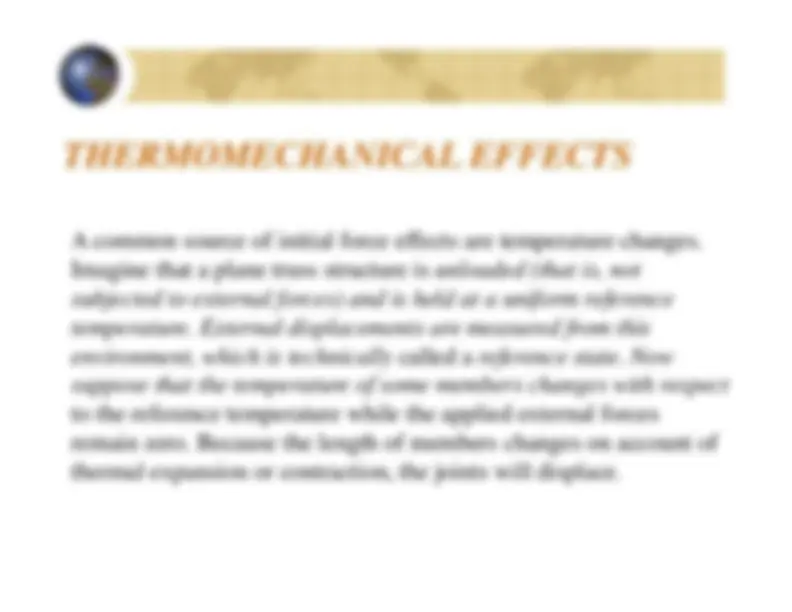
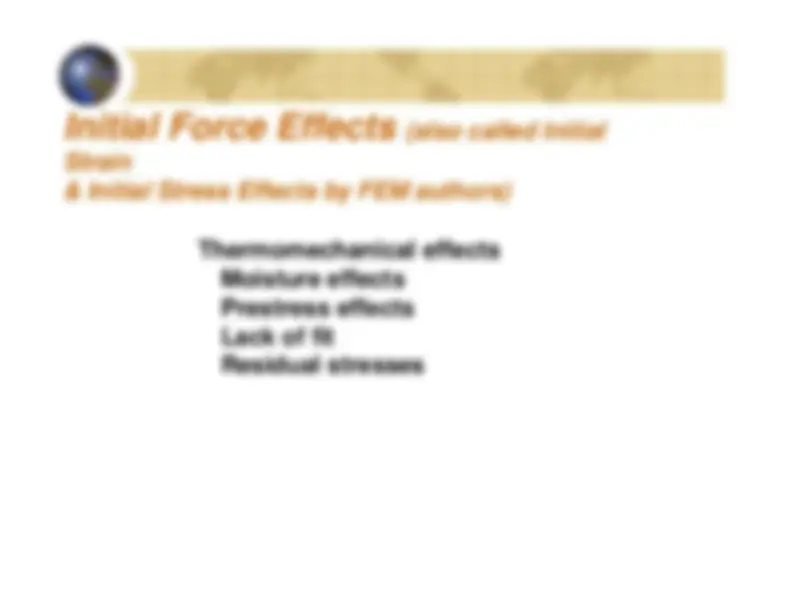
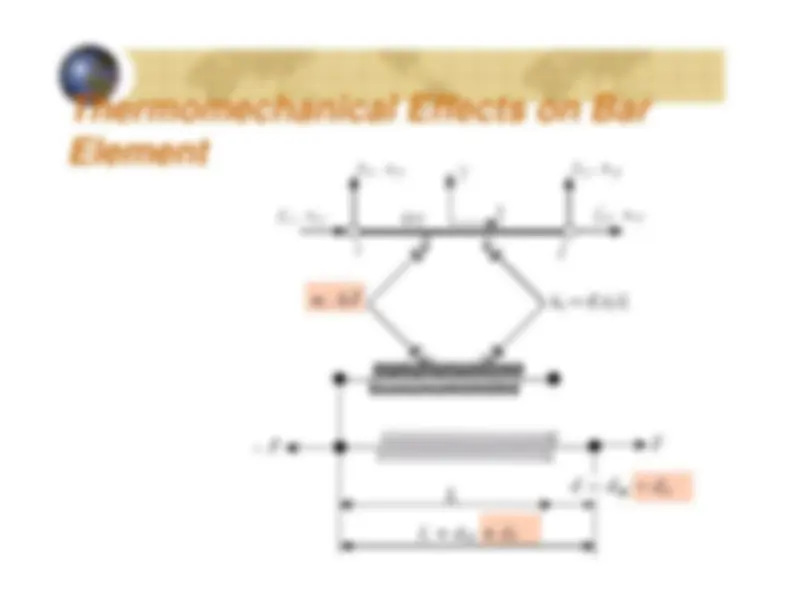
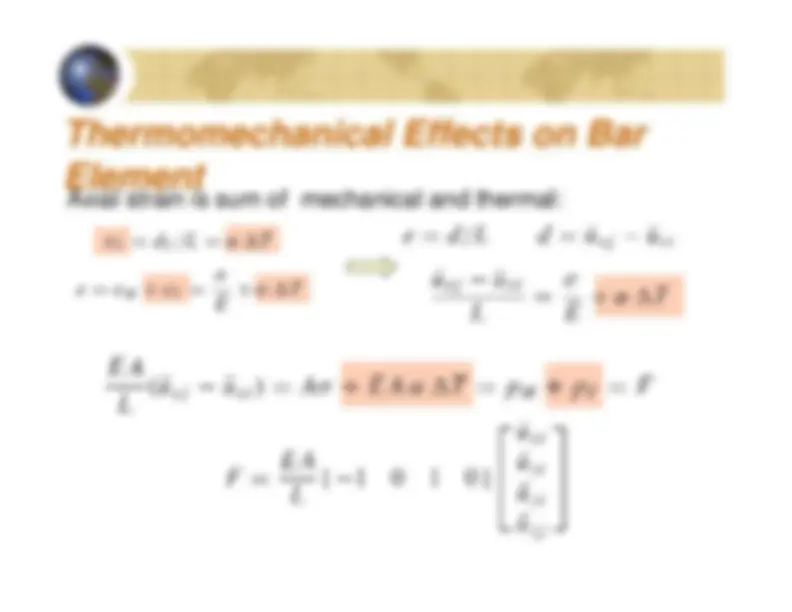
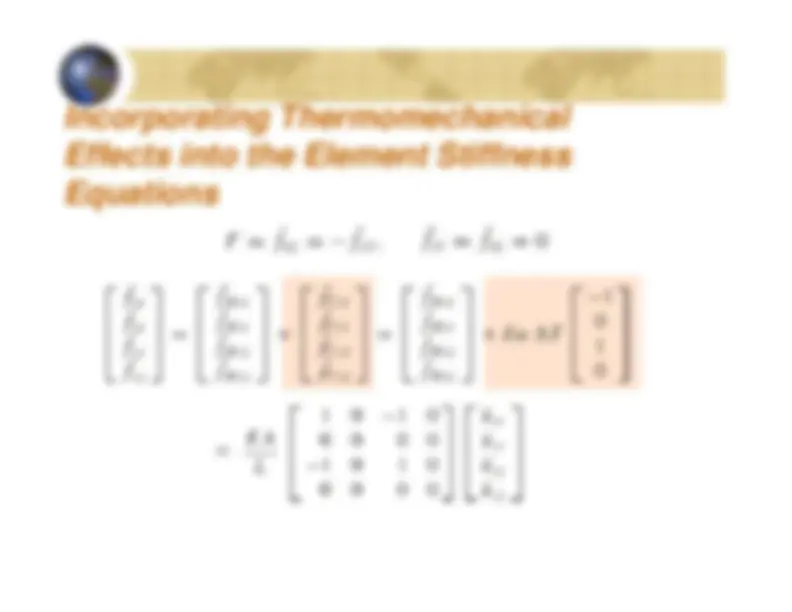
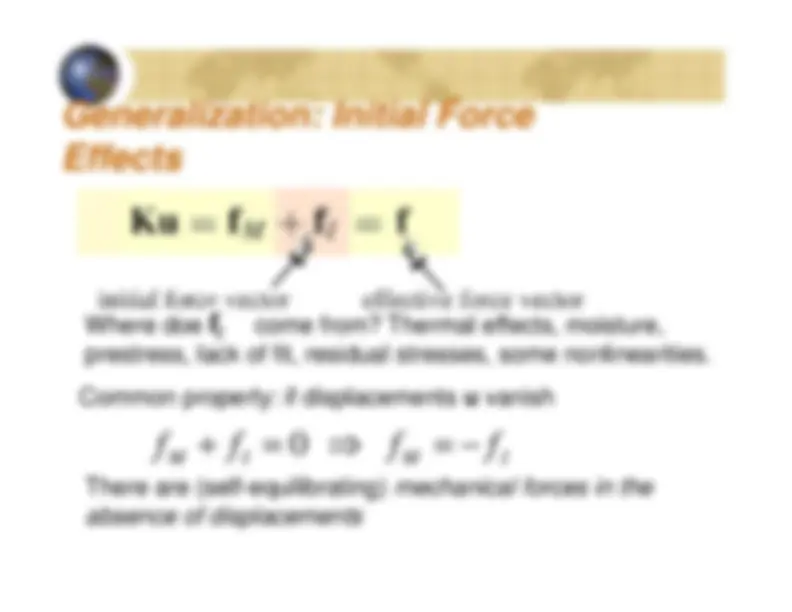
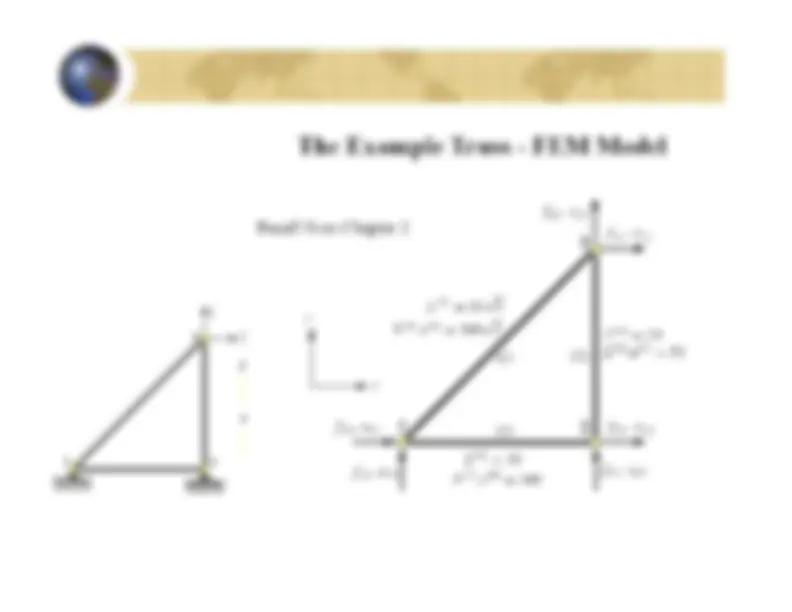
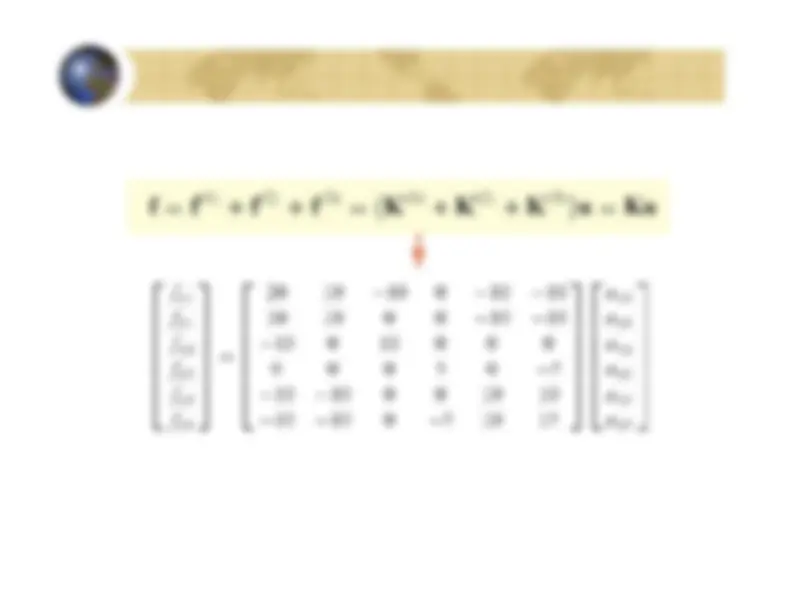
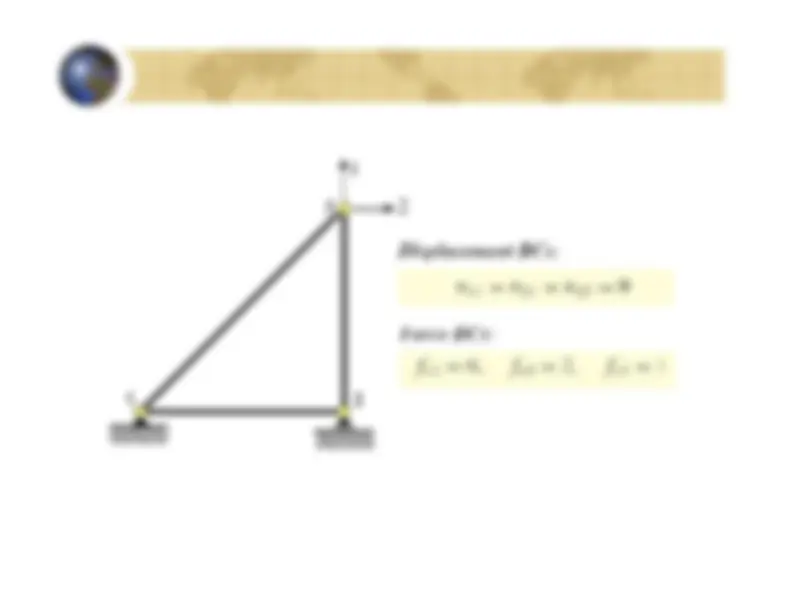
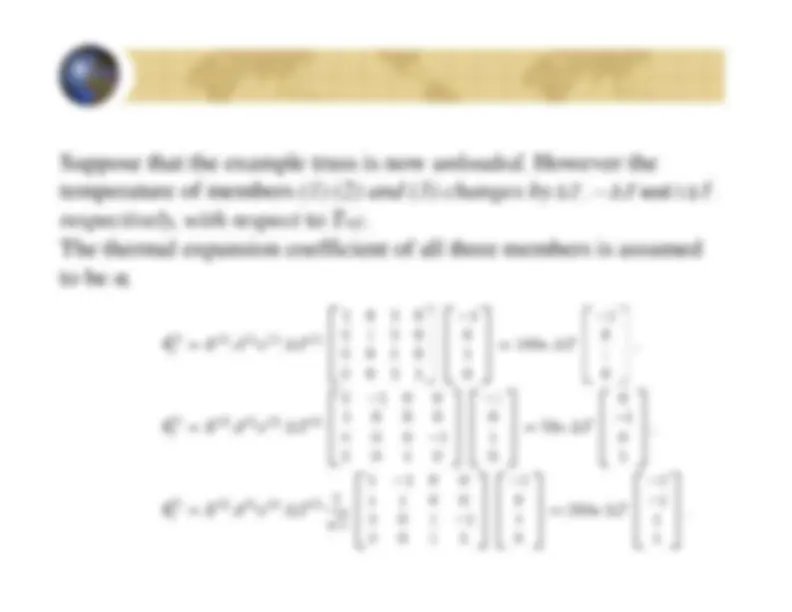
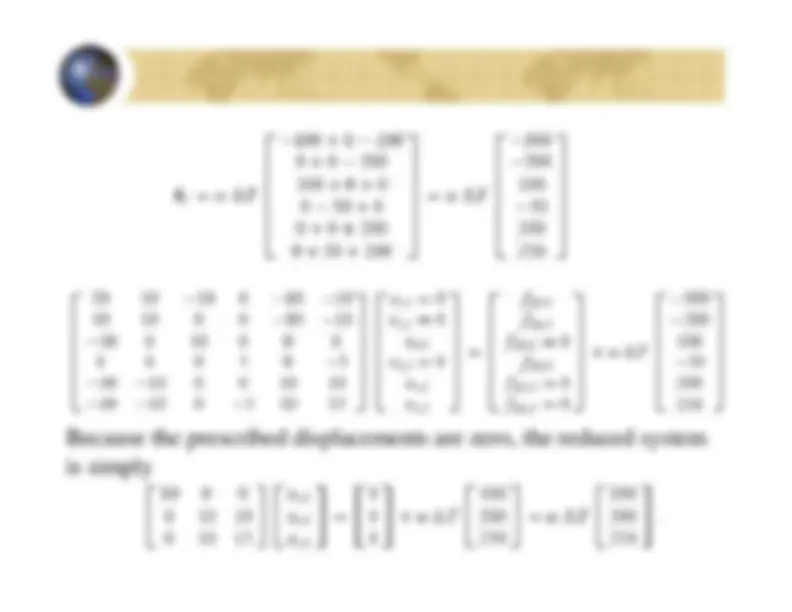
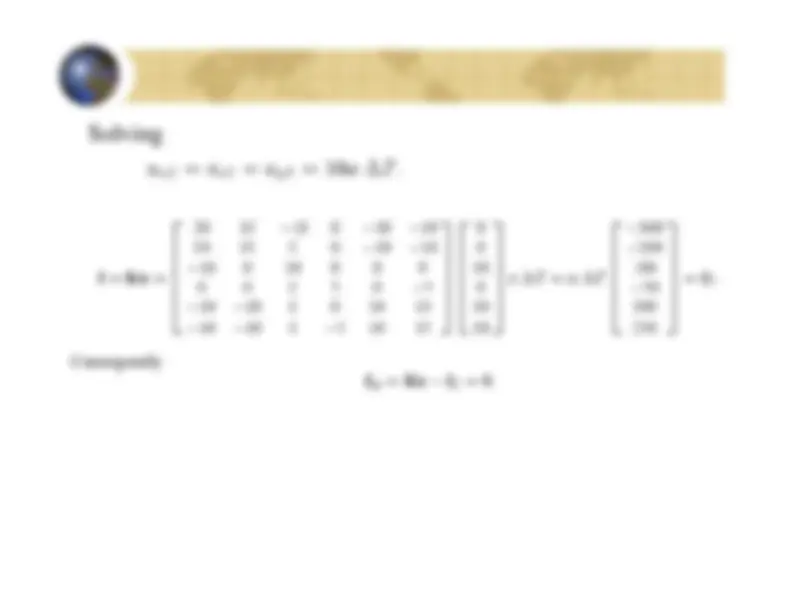
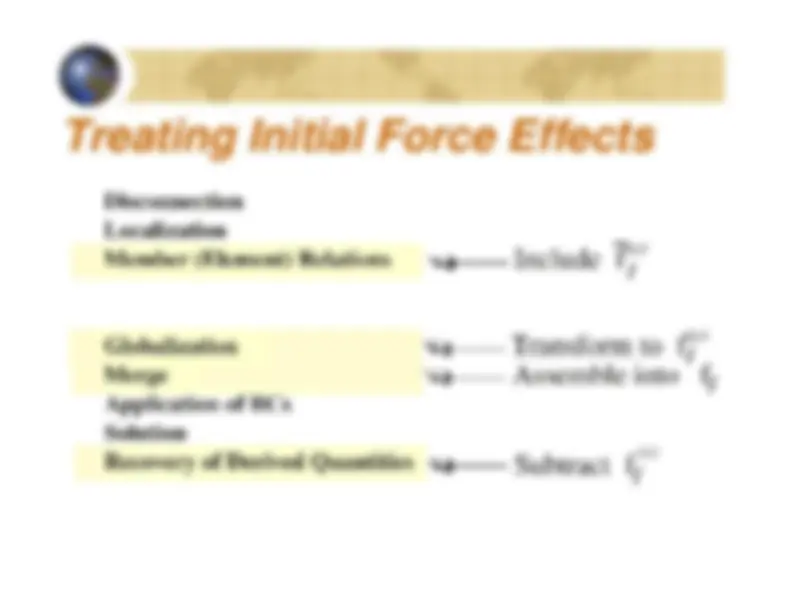
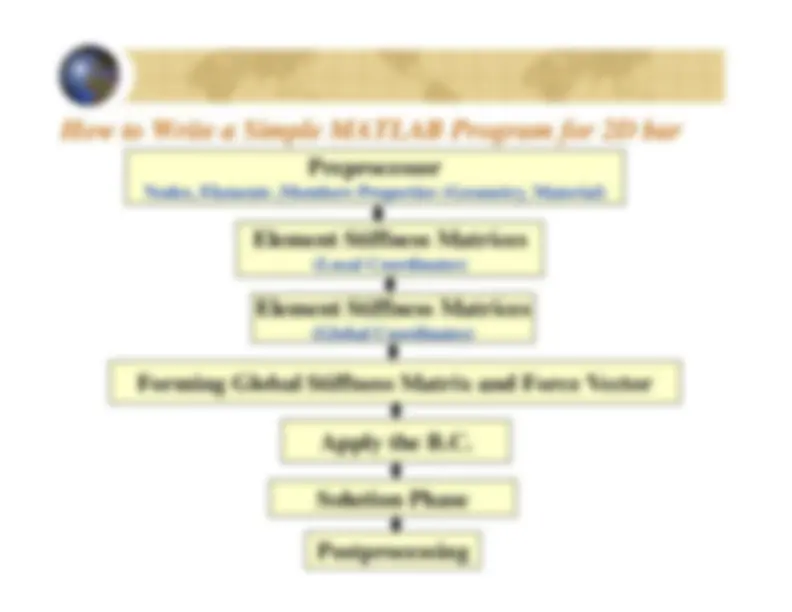
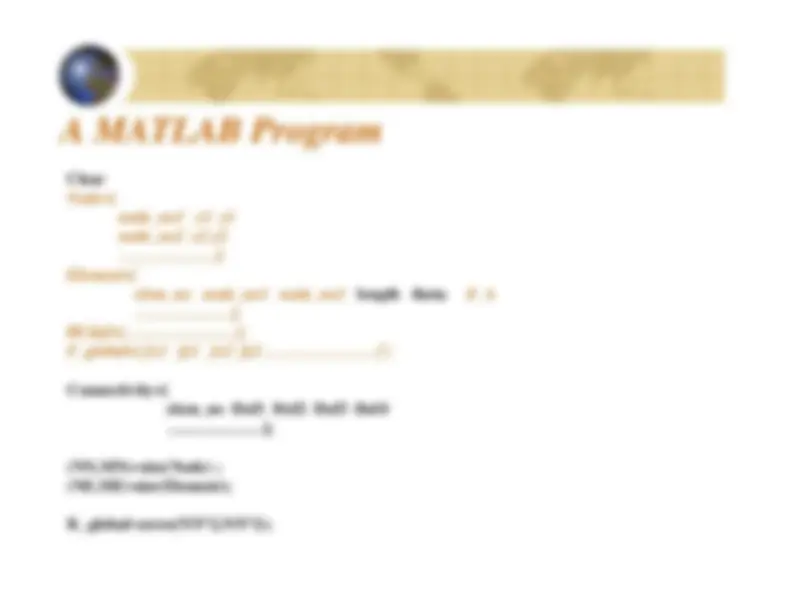
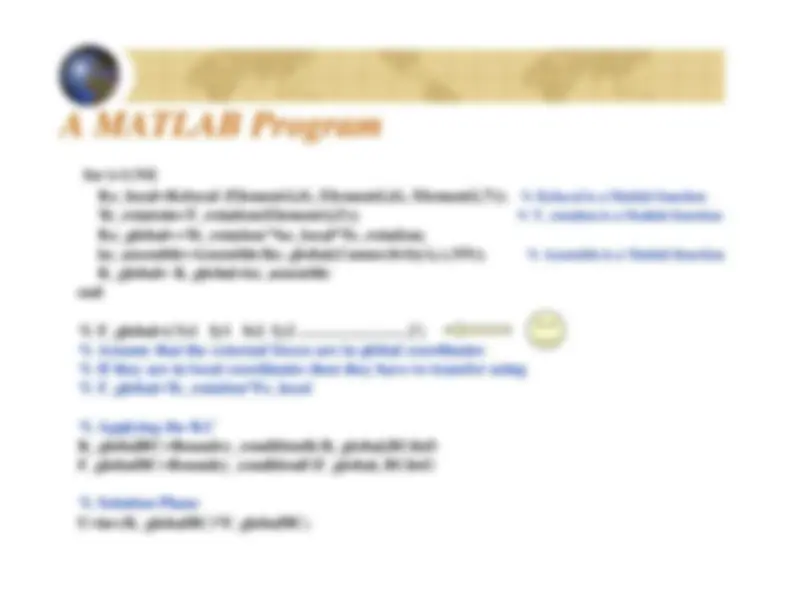
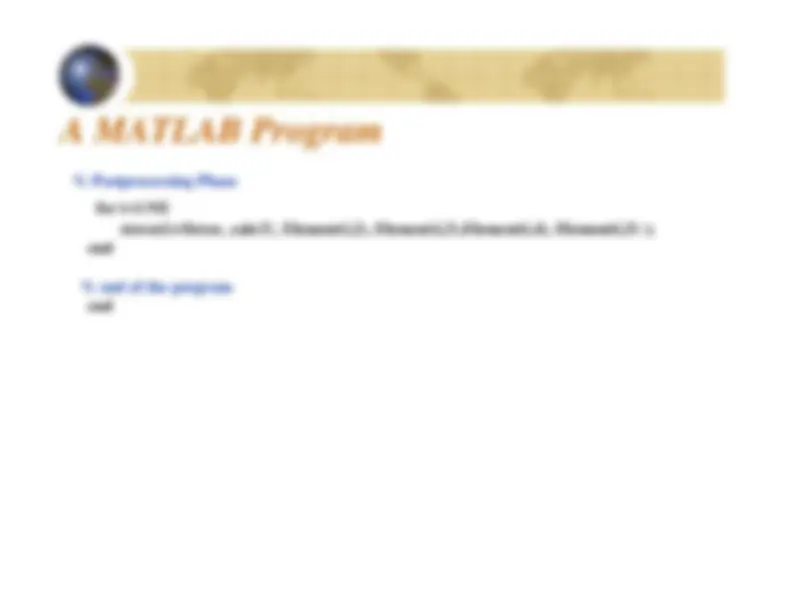


Study with the several resources on Docsity

Earn points by helping other students or get them with a premium plan


Prepare for your exams
Study with the several resources on Docsity

Earn points to download
Earn points by helping other students or get them with a premium plan
Community
Ask the community for help and clear up your study doubts
Discover the best universities in your country according to Docsity users
Free resources
Download our free guides on studying techniques, anxiety management strategies, and thesis advice from Docsity tutors
05 bar elements in 2d space finite element methods
Typology: Lecture notes
1 / 49

This page cannot be seen from the preview
Don't miss anything!










































Uniformly distributed axial load
q
(N/mm, N/m, lb/in) can
be converted to two equivalent nodal forces of magnitude
qL/
We verify this by considering the work done by the load
q,
The new nodal force vector is^ In an assembly of bars,
Lateral displacement
d
oes not contribute to the stretch of the bar, within thelinear theory.
For the two nodes of the bar element, we have
or,
The nodal forces are transformed in the same way,
In the local coordinate system, we have
Augmenting this equation, we write
or ,
Calculation of the
directional cosines l
and
m
Note:
The structure stiffness
matrix is assembled by using the Element stiffness matrices in the usual way a in the 1-D case.
The Direct Stiffness Method (DSM)Steps
Problem:
A simple plane truss is made
of two identical bars (with
and
and loaded as shown in the figure. Find1) displacement of node 2;2) stress in each bar.
Element 1
Using formula (*), we obtain the stiffness matrix in theglobal system
Element 2
Using formula (*), we obtain the stiffness matrix in theglobal system
Condensed FE equation,
Solving this, we obtain the displacement of node 2,
Using formula for stress, we calculate the stresses in the two bars